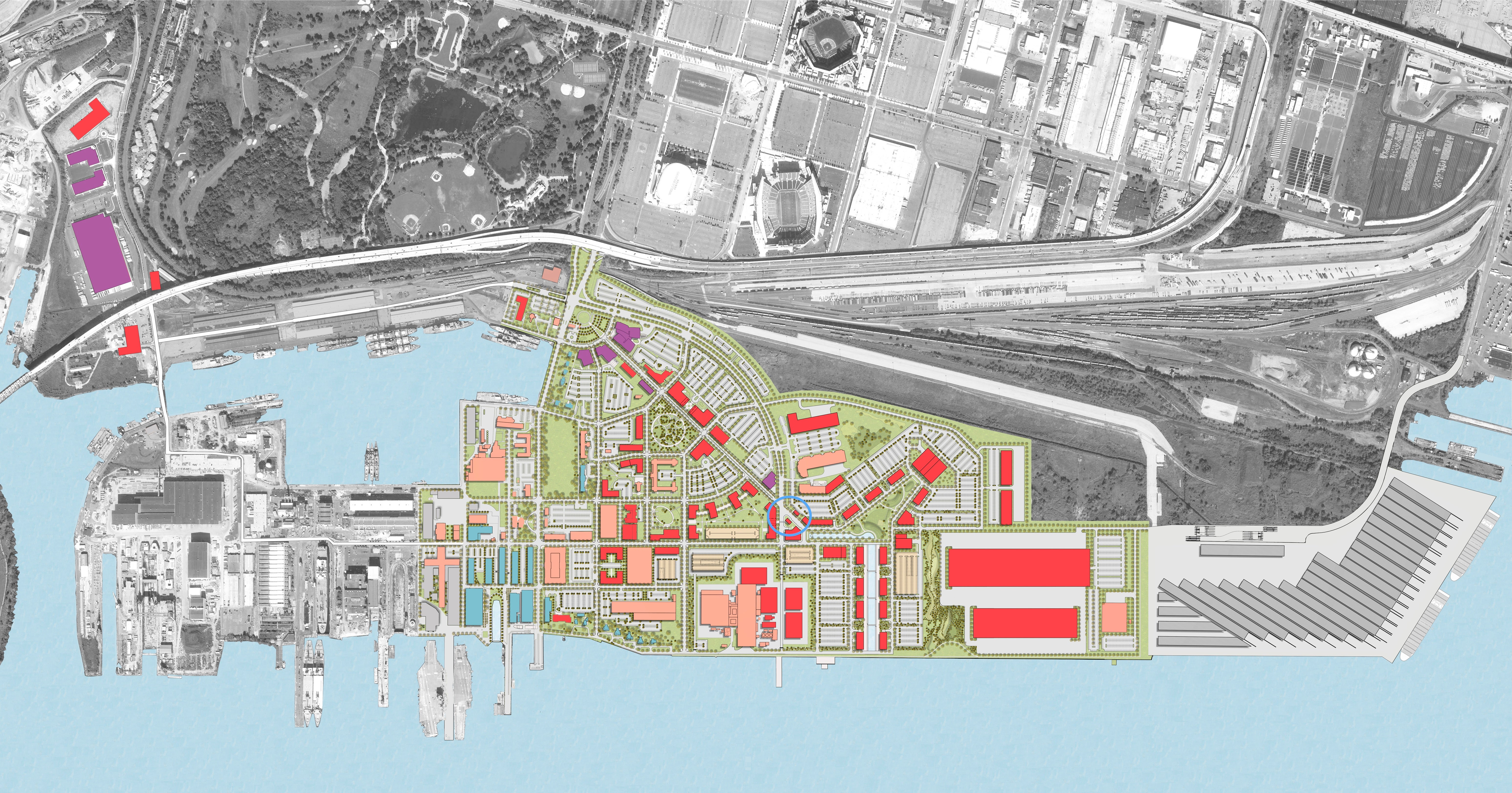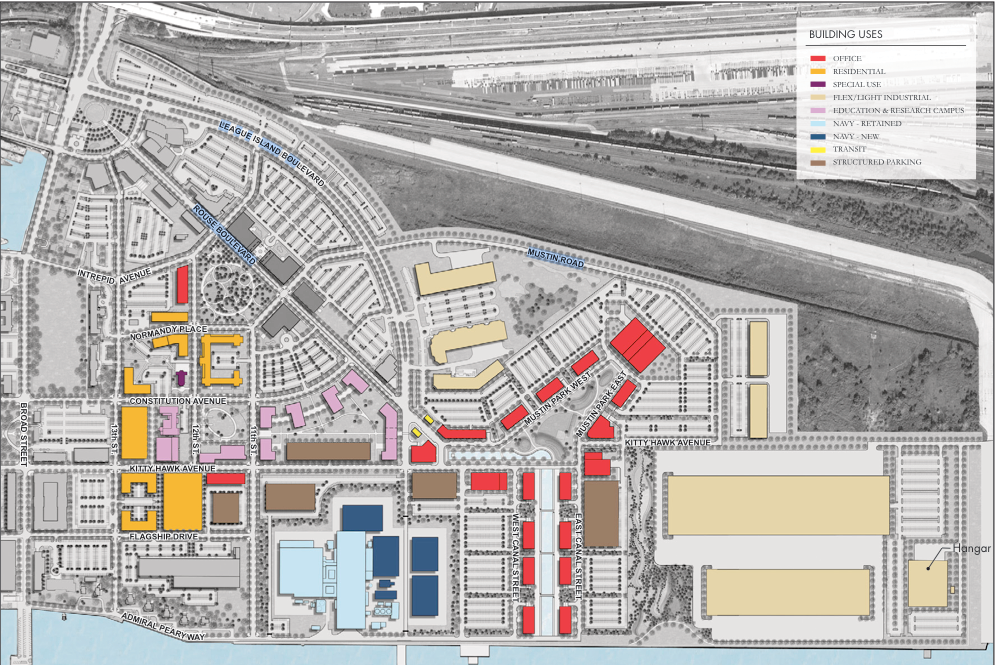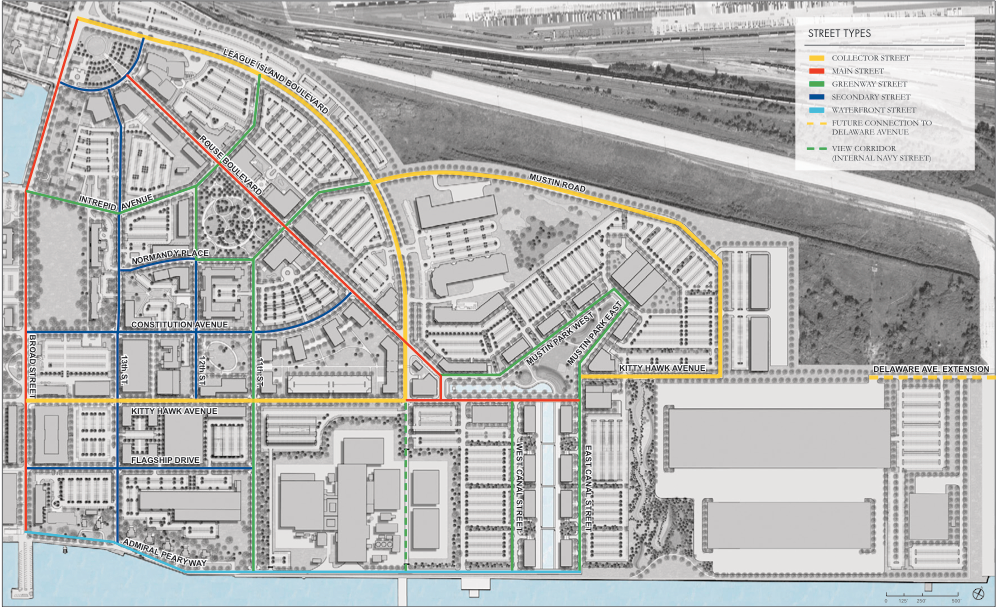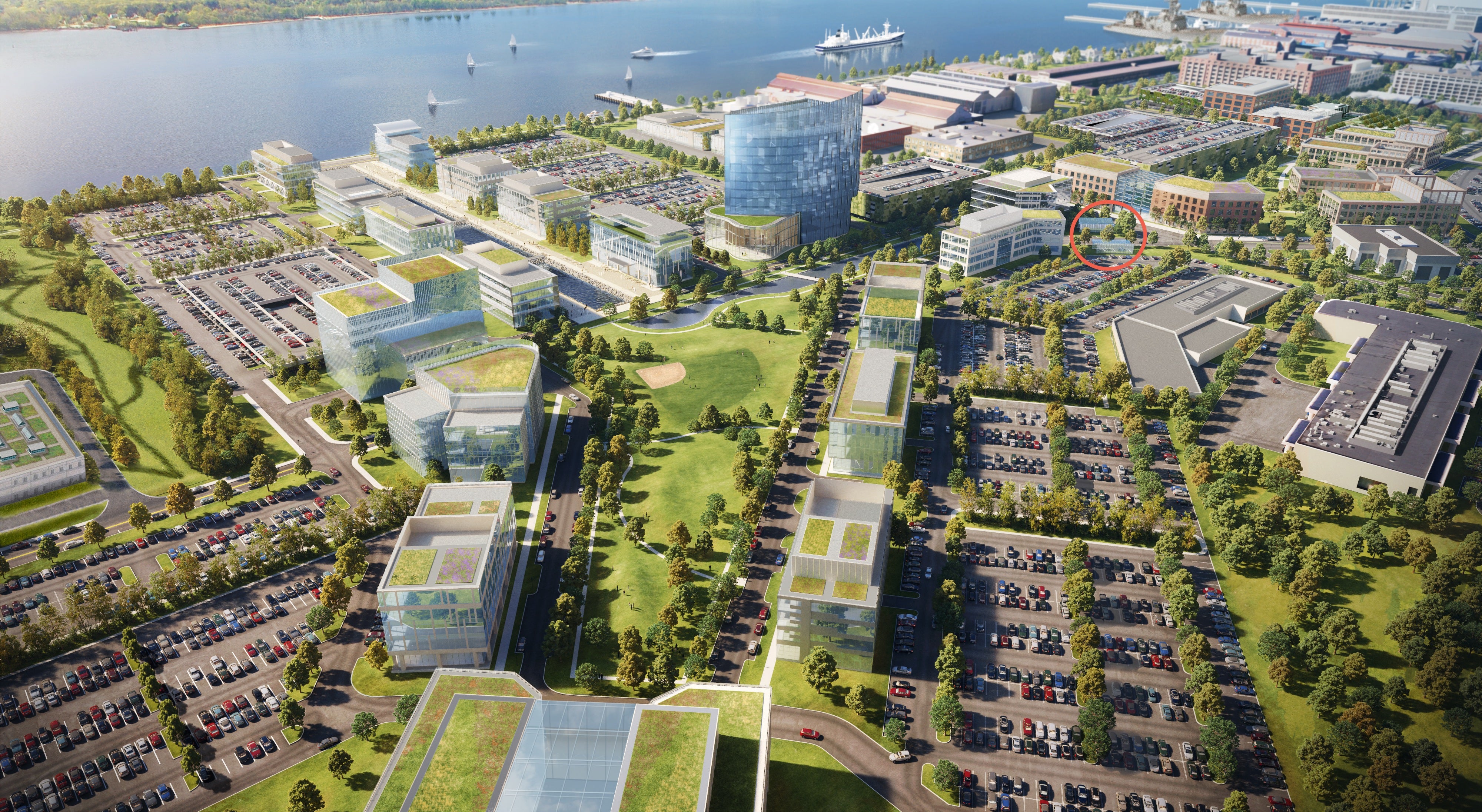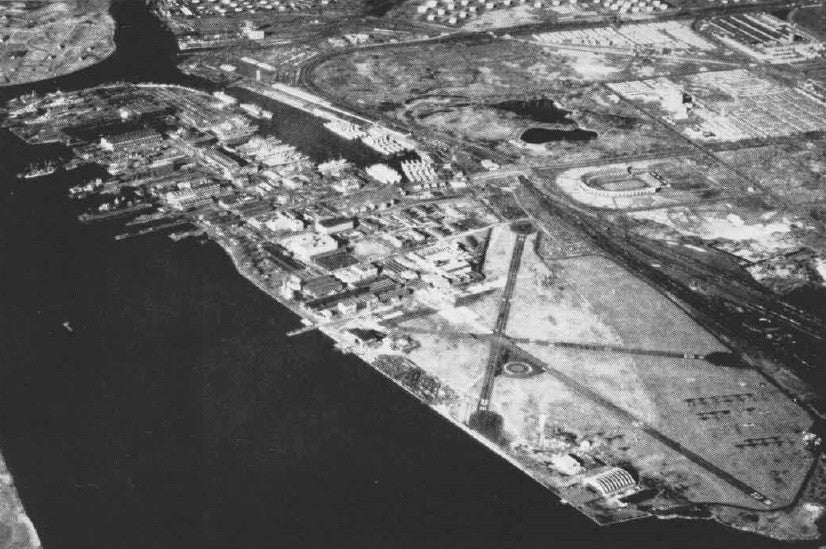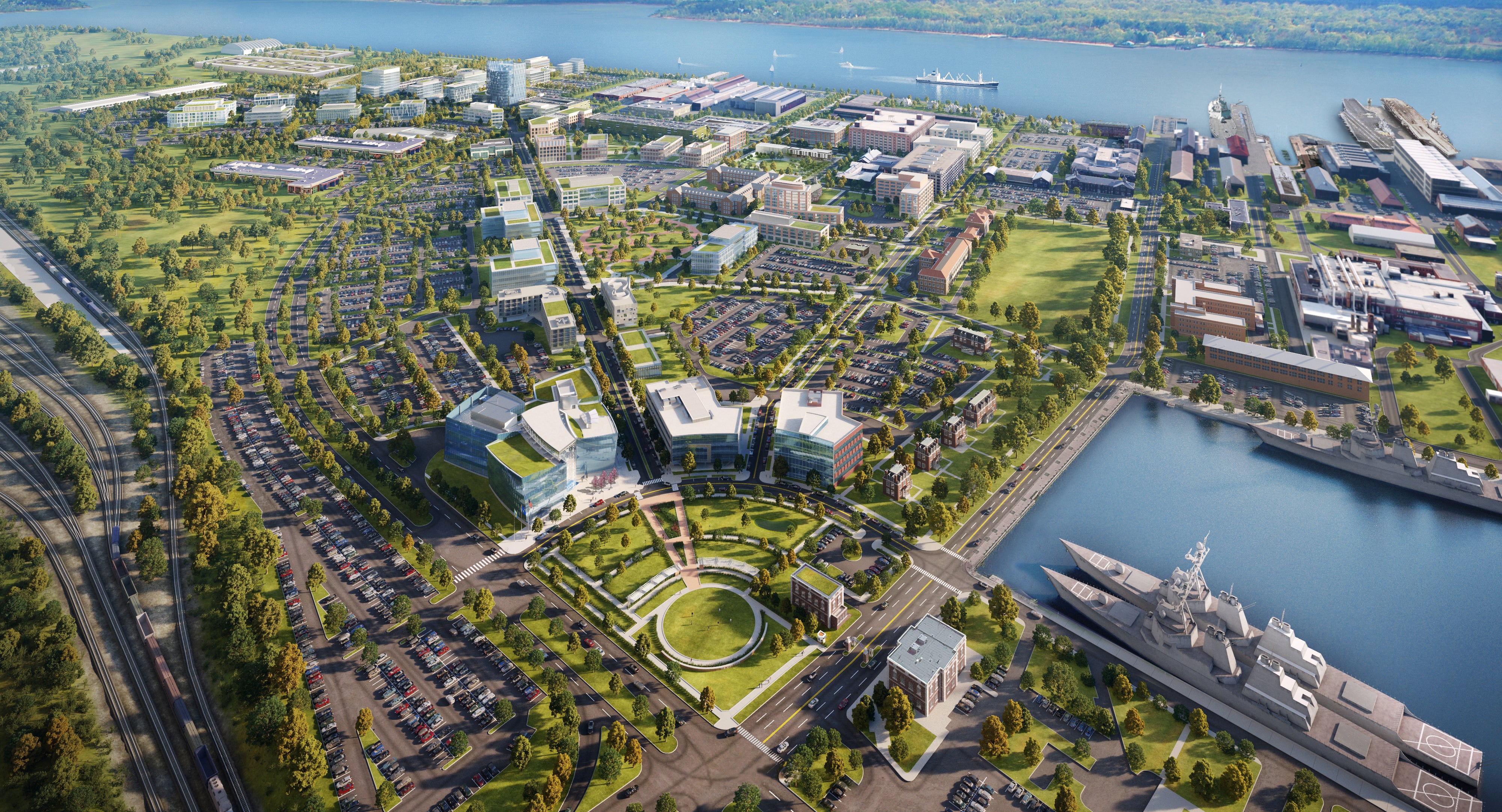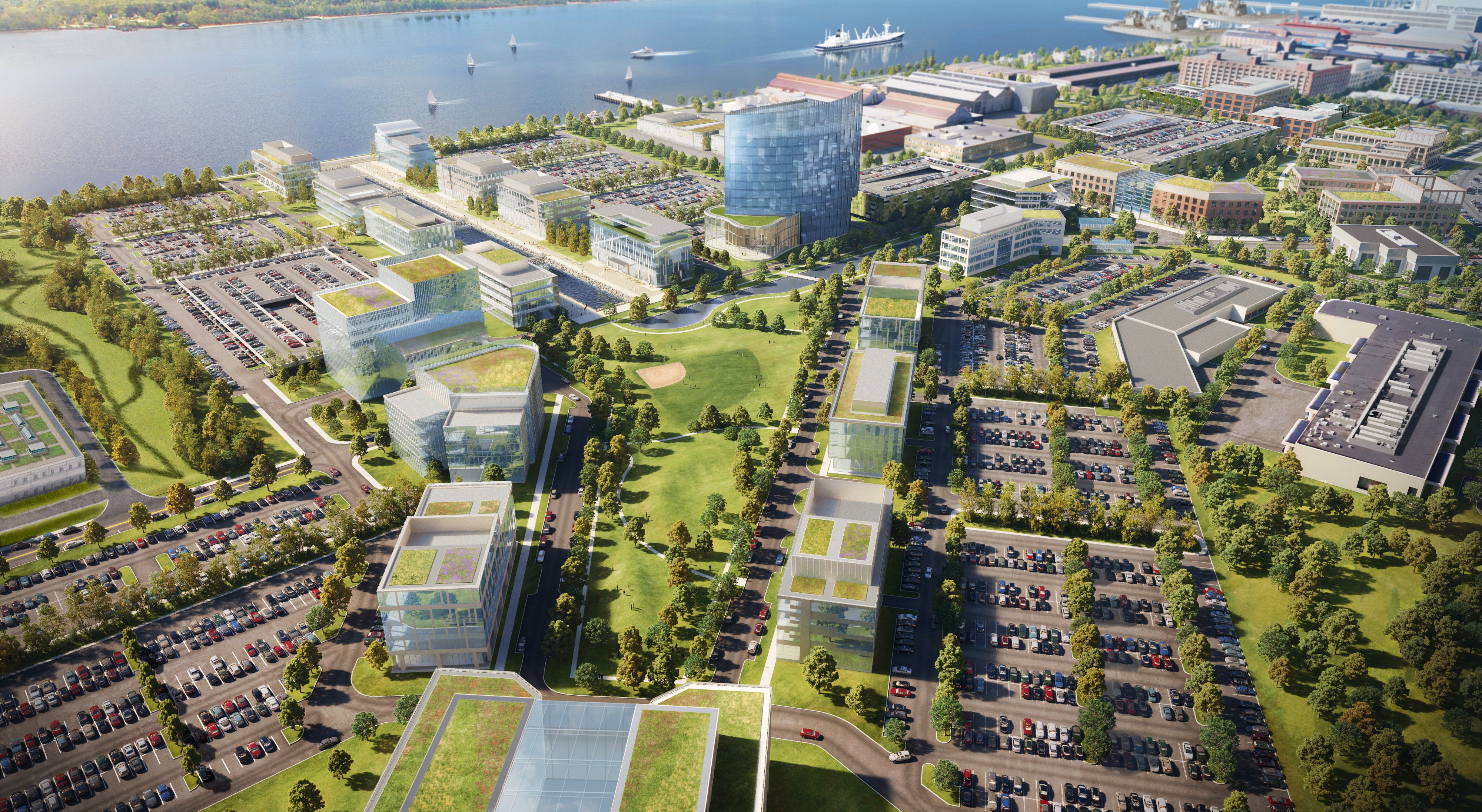PIDC charts a course for BSL extension to Navy Yard
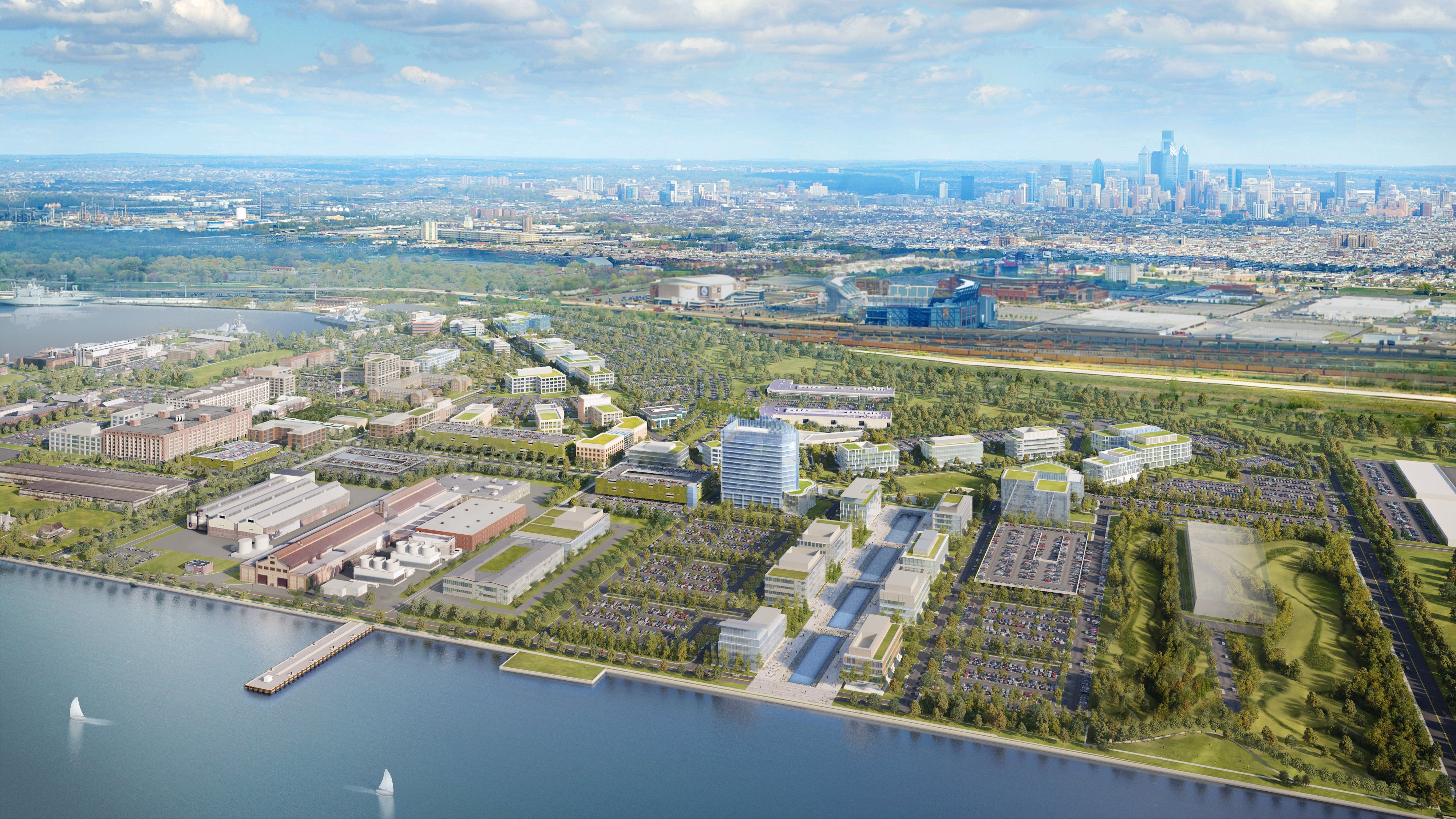
The Navy Yard is an island.
Sunlight glistens off the waters along its eastern, southern and western shores. And to its north lies a sea of asphalt and steel, where I-95 and a stack of CSX freight rail lines form an impassable border. Only a pair of roads, Broad and 26th Streets, provide passage for automobiles. But, bereft of sidewalks and bike lanes, Broad Street, the main causeway to the Navy Yard, is a veritable Cape Horn to pedestrians and bicyclists, with large potholes and fast traffic playing the role of rogue waves and blustery shoals.
Today, traffic during the morning and evening rush hour is a mere annoyance for the 11,500 workers at the yard, but it will grow to an insufferable pain if the number of jobs down there increases to the 30,000 anticipated by the Navy Yard’s master plan. “You need to have a facility like a subway to address that kind of a need,” says William Agate, PIDC’s Senior Vice President of Navy Yard Management and Development.
That’s why the Philadelphia Industrial Development Corporation, which has overseen the Navy Yard’s redevelopment from shuttered military base to corporate office park, wants to extend SEPTA’s Broad Street Line.
The Navy Yard is booming right now, adding about 1,000 jobs per year. New buildings are fully leased before construction on them can even begin. Plans for adding 1,500 residential units over the next few years are in the works. And the streets connecting the Navy Yard to the rest of the city are reaching capacity. According to Agate: “You have to find ways other than by strictly automobile to bring 1,000 more employees per year into the Navy Yard.”
“Frankly,” said Agate, “it’s a race against time to make sure that the infrastructure … is keeping pace with the growth the Navy Yard wants to experience.”
Right now, the BSL ends at AT&T Station near the sport stadiums. PIDC hopes to extend the line another 1.5 miles and to add one or two stations in the Navy Yard.
At its peak during World War II, the Navy Yard was home to 47,000 shipbuilders, sailors and marines, making some wonder why it needs a subway now.
“None of us would have tolerated the situation that occurred for all those commuters when they were trying to get in and out of the Navy Yard at that point in time,” said Agate. “There are stories that … traffic was literally backed up all the way to City Hall.”
SETTING SAIL TOWARDS NECESSARY DEMAND
In order to make the extension actually happen where so many other attempts have failed, PIDC knows it needs to demonstrate two things: need and money.
The Delaware Valley Regional Planning Commission is currently conducting a ridership forecast study based on projected land use and expected SEPTA ridership. That study should be completed sometime this fall. A lot rides on whether it will predict a lot of riders.
Agate hopes that the steadily growing ridership on the Navy Yard’s shuttles will help demonstrate demand for expanding the subway. In 2012, PIDC started running a shuttle between AT&T Station and the Navy Yard and added another shuttle from 10th and Market. Ridership has increased fourfold since its first year, to 295,000 riders last year, and continues to hit capacity even as additional buses are added to the route. It doesn’t hurt that for riders, the buses are free – the Common Area Maintenance (CAM) fees paid by the businesses located in the Navy Yard covers the shuttles’ operating costs.
Agate also expects that Indego, Philadelphia’s soon-to-deploy bike share program, will also help demonstrate the demand for transportation options. While no stations south of Morris Street are currently on the draft Indego bike station map, PIDC anticipates at least one bike docking station near AT&T Station and another two within the Navy Yard.
The BSL extension is about improving the Navy Yard’s accessibility. Various laws of physics prevent us from shrinking the distance between two points, but transportation options can make those distances feel shorter. Conversely, traffic jams and train delays can make distances seem longer. Extending the subway would make the Navy Yard feel closer to Center City, but doing nothing will effectively push it away.
Increasing accessibility increases property values, especially when the usual negative externalities associated with transportation – noise and air pollution – are neutralized, as is the case with subways. It also benefits lunchtime retail – while drivers can slip out to Snyder Avenue for some John’s Roast Pork, subway riders would have to make do with Dinic’s (not exactly a terrible thing).
PIDC AT THE HELM
Even if the ridership forecasts are strong, whether or not the BSL gets extended will likely come down to money.
A 2008 feasibility study by the DVRPC estimated the BSL extension would cost about $370 million. Agate says PIDC is using $500 million as a “placeholder” figure as they “start having the conversation around [the question]: How you can afford to pay that kind of money?”
The answer, Agate says, lies in building “a broad base of support.”
So far, extending the BSL to the Yard has been one of those flirtatious plans always seemingly just out of reach. The City of Philadelphia commissioned a study in 1966 that found the project feasible. But, as the DVRPC’s 2008 study notes, due to the mounting costs of the Vietnam War, the Navy and the City passed on spending $14.5 million ($96 million in 2008 dollars) to make it happen.
Some of the previous extension attempts were marooned by countervailing economic forces. Others simply failed to get all the necessary governmental entities on board. PIDC hopes to pilot this attempt to a long overdue success.
Agate knows he has to convince more than just just Philadelphia and SEPTA. He needs to get the entire region on board. “The biggest hurdle,” said Agate, “is making sure that groups and decision makers outside of the Navy Yard … are engaged in the process of understanding why this project is so important regionally.”
Most major infrastructure projects need a cheerleader in order to entertain even the slightest hope of seeing shovels break ground. New York’s parkways were built by Robert Moses, the Big Dig in Boston had Tip O’Neill, Millennium Park in Chicago was Mayor Daley’s parting gift. Having the PIDC not simply cheerleading, but quarterbacking, the extension makes it a more viable contender for completion than many of the daydream proposals that periodically tease Philadelphia’s imagination.
Assuming Congress can pass legislation to fix federal transportation funding, federal grants for major capital projects could fund upwards of half the cost. The rest would have to come from the Commonwealth, SEPTA, Philadelphia and, perhaps, private companies.
Already, Navy Yard based companies pay CAM fees to PIDC. It’s easy to imagine those being reallocated to finance bond payments for the BSL expansion, effectively creating a transit value capture zone. Creating the framework for such zones is often the hardest part – just look at Senator Pileggi’s attempts to fix the Commonwealth’s underutilized Transit Revitalization Improvement District program. With the PIDC’s unique stewardship of the Navy Yard already in place, the hardest part is done: convincing nearby property owners to pay extra fees to cover transportation infrastructure improvements. The questions would simply be just how much CAM to charge and how much to allocate to help cover the costs of extending the BSL extension.
Even if PIDC can demonstrate the need and can build a broad base of financial support, there still is no guarantee of the extension being built. If the Navy Yard’s growth suddenly died, hopes for the BSL extension wouldn’t be too far behind. There will be other infrastructure projects competing for limited state and federal dollars. The Navy Yard isn’t he only job center in the city with grand ideas for infrastructure spending: some in University City want to see the rail yard north of 30th Street Station capped, and the dream of covering I-95 near Penn’s Landing might just come true.
But if the conditions cooperate, then the Broad Street extension, finally helmed by the PIDC, has a legit shot of charting a course to groundbreaking.
WHYY is your source for fact-based, in-depth journalism and information. As a nonprofit organization, we rely on financial support from readers like you. Please give today.



